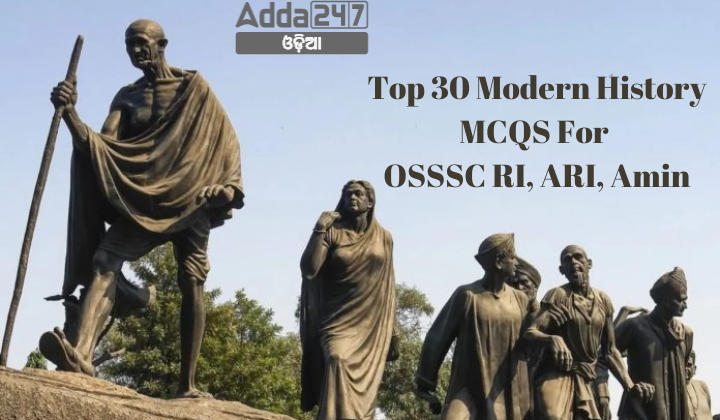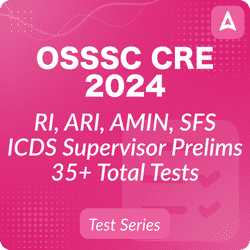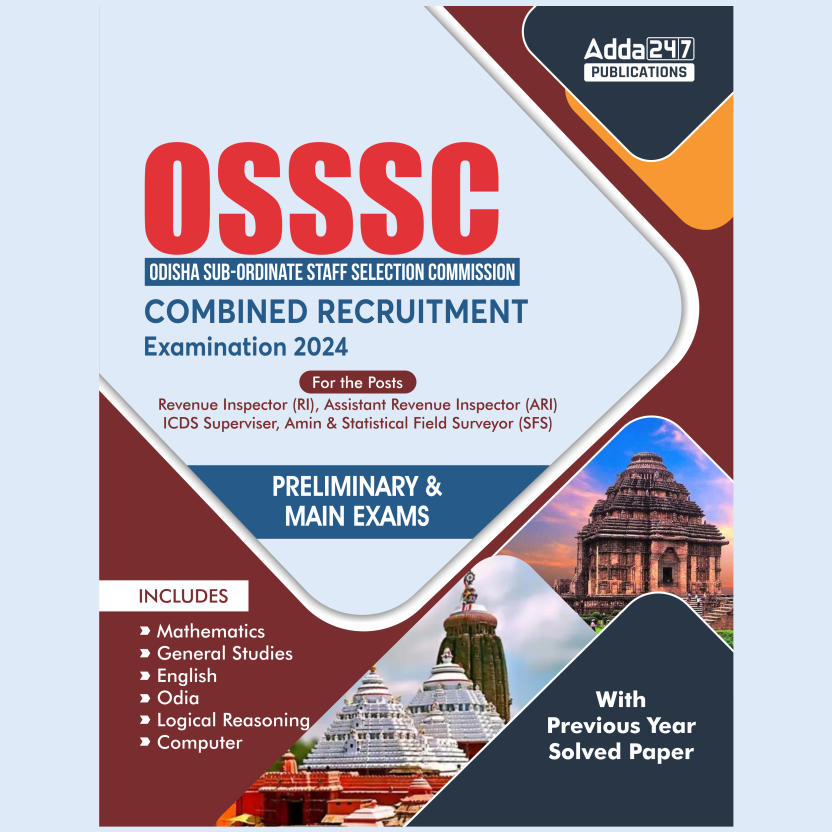Preparing for competitive exams such as OSSSC RI (Revenue Inspector), ARI (Assistant Revenue Inspector), Amin, SFS, or ICDS Supervisor often requires a strong grasp of historical events. Modern history, especially, forms a significant part of the syllabus, covering crucial periods and events that shaped the world as we know it today. To aid in your preparation, here are 30 multiple-choice questions (MCQs) focusing on modern history:
Top 30 Modern History MCQs for OSSSC RI,ARI, Amin, SFS, ICDS Supervisor
- What was the main proposal of the Wavell Plan regarding the Viceroy’s Executive Council?
(a) All members would be British
(b) The council would consist entirely of Indians except the Viceroy and the Commander-in-Chief
(c) The council would be composed entirely of Muslims
(d) The council would consist of both British and Indian members equally
Ans. (b) The council would consist entirely of Indians except the Viceroy and the Commander-in-Chief. - How many Muslim representatives were proposed in the Viceroy’s Executive Council under the Wavell Plan?
(a) 4
(b) 6
(c) 8
(d) 10
Ans. (b) 6 Muslim representatives. - Which portfolio was proposed to be transferred to an Indian member under the Wavell Plan?
(a) Defence
(b) Home Affairs
(c) Foreign Affairs
(d) Finance
Ans. (c) Foreign Affairs. - What was the purpose of the Shimla Conference convened by Lord Wavell?
(a) To finalize the transfer of power to Indians
(b) To discuss the formation of a new Indian government
(c) To create a constitution for independent India
(d) To discuss and finalize the members of the Viceroy’s Executive Council
Ans. (d) To discuss and finalize the members of the Viceroy’s Executive Council. - Why did the Shimla Conference fail?
(a) The British government did not support the Wavell Plan
(b) The Congress refused to attend the conference
(c) The League and the Congress could not settle their differences
(d) The plan was rejected by the Indian population
Ans. (c) The League and the Congress could not settle their differences. - What was Jinnah’s main demand at the Shimla Conference?
(a) Equal representation for Muslims and Hindus
(b) Recognition of the Muslim League as the sole representative of Indian Muslims
(c) More seats for Muslims in the Council
(d) The complete withdrawal of British forces from India
Ans. (b) Recognition of the Muslim League as the sole representative of Indian Muslims. - How did Congress react to Jinnah’s demand at the Shimla Conference?
(a) Congress accepted Jinnah’s demand
(b) Congress rejected Jinnah’s demand
(c) Congress proposed an alternative plan
(d) Congress walked out of the conference
Ans. (b) Congress rejected Jinnah’s demand. - What happened after the failure of the Shimla Conference?
(a) The Wavell Plan was implemented despite the failure
(b) The British government abandoned the idea of Indian independence
(c) The Wavell Plan was dissolved
(d) The Indian National Congress formed a parallel government
Ans. (c) The Wavell Plan was dissolved. - Which political leader was NOT invited to the Shimla Conference by Lord Wavell?
(a) Mahatma Gandhi
(b) M A Jinnah
(c) Jawaharlal Nehru
(d) Subhas Chandra Bose
Ans. (d) Subhas Chandra Bose. - What was the significance of the Wavell Plan in the context of Indian independence?
(a) It successfully avoided the partition of India
(b) It was the last major attempt to form a government before partition
(c) It led directly to the independence of India
(d) It was the first plan to be rejected by both the Congress and the League
Ans. (b) It was the last major attempt to form a government before partition. - When was the Quit India Movement officially launched by the Indian National Congress?
(a) 15 August 1942
(b) 8 August 1942
(c) 26 January 1942
(d) 2 October 1942
Ans: (b) 8 August 1942 - Who was named the leader of the Quit India Movement by the Indian National Congress?
(a) Jawaharlal Nehru
(b) Subhas Chandra Bose
(c) Mahatma Gandhi
(d) Sardar Vallabhbhai Patel
Ans: (c) Mahatma Gandhi - Which slogan was famously associated with the Quit India Movement?
(a) Jai Hind
(b) Inquilab Zindabad
(c) Swaraj is my birthright
(d) Do or Die
Ans: (d) Do or Die - What was the primary objective of the Quit India Movement?
(a) Establishing a parallel government
(b) Immediate end to British rule over India
(c) Demanding dominion status for India
(d) Abolishing the salt tax
Ans: (b) Immediate end to British rule over India - Which prominent leader was NOT in favor of the Quit India Movement and resigned from the INC?
(a) Subhas Chandra Bose
(b) C. Rajagopalachari
(c) Maulana Abul Kalam Azad
(d) Jayaprakash Narayan
Ans: (b) C. Rajagopalachari - How did the British government initially respond to the Quit India Movement?
(a) Granted partial independence
(b) Negotiated with the INC
(c) Arrested all major Congress leaders
(d) Imposed martial law
Ans: (c) Arrested all major Congress leaders - Which section of the Indian population did Gandhi advise to ‘pay rent if the landlords are anti-government’?
(a) Soldiers
(b) Peasants
(c) Students
(d) Princes
Ans: (b) Peasants - Which region did NOT see significant activity during the Quit India Movement?
(a) UP
(b) Bihar
(c) Maharashtra
(d) Punjab
Ans: (d) Punjab - Which group did NOT support the Quit India Movement?
(a) Hindu Mahasabha
(b) Indian National Congress
(c) Indian National Army
(d) Princely states
Ans: (a) Hindu Mahasabha - Despite the suppression, what was one significant achievement of the Quit India Movement?
(a) Immediate independence for India
(b) Formation of a provisional government
(c) Strengthened the demand for complete independence
(d) British acceptance of Indian independence during the war
Ans: (c) Strengthened the demand for complete independence - Dr. Ambedkar represented which community during the First Round Table Conference?
(a) Hindus
(b) Muslims
(c) Depressed Classes
(d) Sikhs
Ans: (c) Depressed Classes - Why was Mahatma Gandhi opposed to the idea of a separate electorate for the Depressed Classes?
(a) He did not support the rights of the Depressed Classes
(b) He did not want the untouchables to be viewed as outside the folds of Hinduism
(c) He supported the British policy of divide and rule
(d) He wanted the Depressed Classes to have no representation
Ans: (b) He did not want the untouchables to be viewed as outside the folds of Hinduism - What was the outcome of the Poona Pact between Dr. Ambedkar and Mahatma Gandhi?
(a) Separate electorates for Depressed Classes
(b) Reserved seats for Depressed Classes in provincial legislatures through joint electorates
(c) Complete independence for India
(d) Abolition of the caste system
Ans: (b) Reserved seats for Depressed Classes in provincial legislatures through joint electorates - How many seats were reserved for the Depressed Classes in the provincial legislatures as per the Poona Pact?
(a) 100
(b) 120
(c) 147
(d) 160
Ans: (c) 147 - What percentage of seats in the Central Legislature was reserved for the Depressed Classes under the Poona Pact?
(a) 10%
(b) 15%
(c) 19%
(d) 25%
Ans: (c) 19% - Which province had the highest number of reserved seats for the Depressed Classes as per the Poona Pact?
(a) Bengal
(b) Madras
(c) United Provinces
(d) Bombay with Sindh
Ans: (b) Madras - Under the Poona Pact, how were candidates from the Depressed Classes selected for the general election?
(a) Through separate electorates
(b) By nomination
(c) Through an Electoral College
(d) By the British government
Ans: (c) Through an Electoral College - What was the duration for which the Poona Pact’s provisions were to be followed?
(a) 5 years
(b) 10 years
(c) 15 years
(d) 20 years
Ans: (b) 10 years - Which leader believed that the Poona Pact would lead to further fragmentation among the Depressed Classes?
(a) Mahatma Gandhi
(b) Jawaharlal Nehru
(c) Dr. Ambedkar
(d) Sardar Patel
Ans: (c) Dr. Ambedkar - The Poona Pact was met with strong reactions from which provinces due to its arrangements?
(a) Punjab and Bengal
(b) Madras and Bombay
(c) United Provinces and Central Provinces
(d) Assam and Bihar
Ans: (a) Punjab and Bengal
















